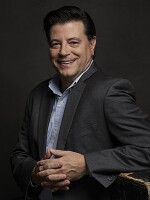While police have identified the six people killed when a new pedestrian bridge in Miami collapsed last week, officials are still investigating what caused the tragedy.
The good news is there are no bridges in Connecticut that are similar in design to the one in Florida. In fact, bridge experts say the design of Miami’s pedestrian suspension bridge was unusual.
“Quite unique,” said Michael Culmo, chief technical officer for CME Engineering in Mansfield. “I would argue that it might be one of a kind, I don't know that for sure, but it is a very unusual structure. It's not your normal kind of bridge you would put across a roadway.”
But Culmo said it's way too early to blame the bridge's unique design for the collapse. The Miami bridge was built using a method called Accelerated Bridge Construction, or ABC. Culmo is an expert on this type of bridge construction.
“What it means basically is that we are going to take the entire superstructure, which is the beams and the deck and the railings, and we are going to build it off-site,” Culmo explains. “We build the entire bridge using standard conventional methods, the big difference is the workers are off the highway, it doesn't impact the highway at all.”
After it's constructed, the bridge is carefully picked up in one piece and put on the existing foundation. Workers then construct the pavement and other finishing touches.
Culmo says ABC has been around a long time and is standard practice for bridge construction. He says despite the name, accelerated bridge construction, the method takes a lot of time and planning.
“When we do accelerated construction, we never, ever sacrifice quality for speed,” he said. The motto we use is ‘get, in, get out, and stay out.’”
Culmo said like many bridges in Connecticut and around the world, the installation of the Miami bridge took six hours and appears to have come off without a hitch. Some engineers have been quick to blame ABC for the collapse. Again, Culmo emphasizes that any speculation about the collapsed is premature at this point.


